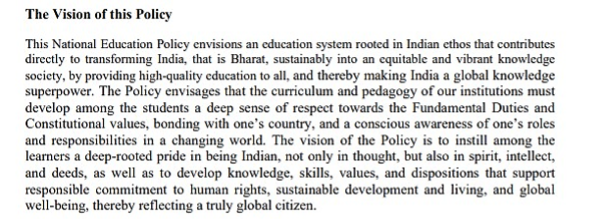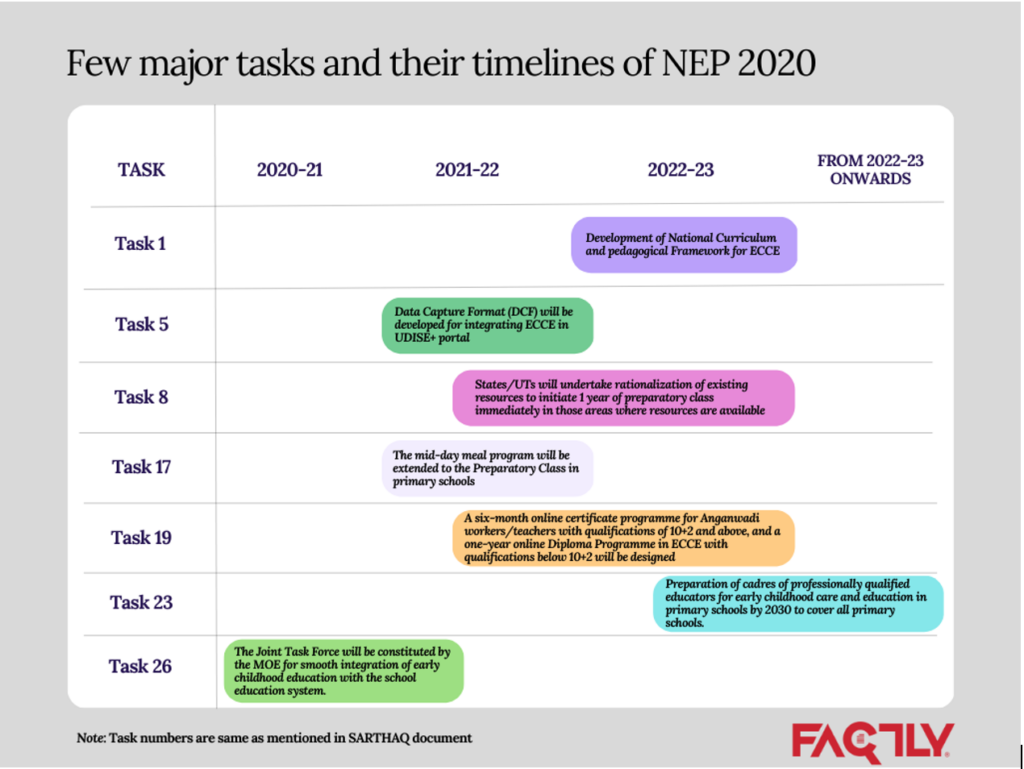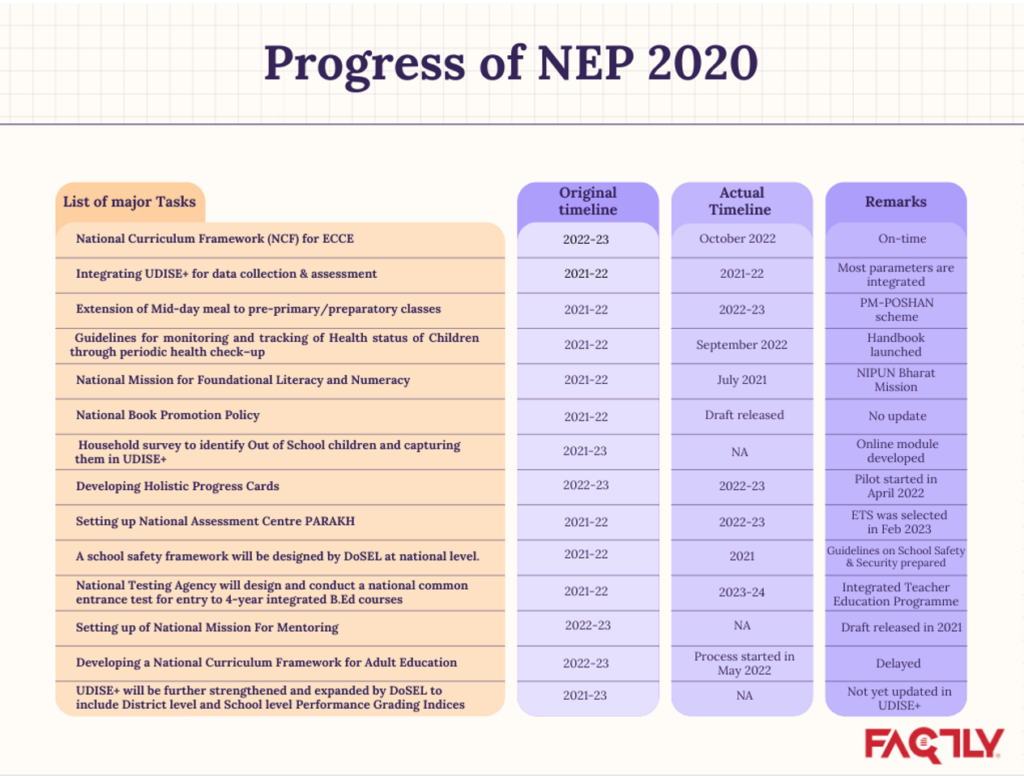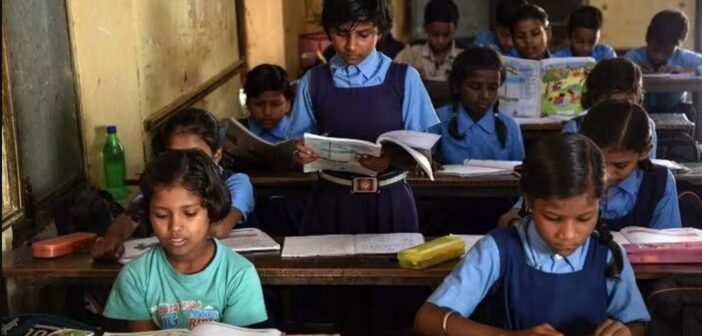The New Education Policy 2020 rests on five pillars- Access, Equity, Quality, Affordability and Accountability. The policy outlines its vision for the future of education landscape in India. What has the implementation like so far? Here is a review.
It is well recognised that education is a great leveller and is the best tool for achieving economic and social mobility, inclusion, and equality. By 2040, India must develop a world-class educational system with equal access to the highest quality of education for all students, regardless of their social or economic status. To achieve this, a New Education Policy (NEP) was adopted. This National Education Policy 2020 is the first education policy of the 21st century. Prior educational policies have mostly dealt with concerns of access and equity in their implementation. This Policy tries to address the challenges of the National Policy on Education from 1986, as modified in 1992 (NPE 1986/92).
In today’s story, we look at the implementation status of the NEP and the progress made so far.
NEP vision
The New Education Policy 2020 rests on five pillars- Access, Equity, Quality, Affordability and Accountability. The policy outlines its vision for the future of education landscape in India as below.

The ultimate goal of this education policy is to produce excellent people who are able to reason and act, who are courageous and resilient, who have a scientific mindset and a creative imagination, and who have strong ethics and values. To create the equal, inclusive, and pluralistic society that our Constitution envisions, it aspires to create active, productive, and contributing citizens.
NEP Implementation plan
Implementation of such an ambitious policy involving different agencies at various levels is a complex task. Understanding its complexity, the Department of School Education and Literacy (DoSEL) organized stakeholder consultations under ‘ShikShak Parv’ and charted out implementation strategies. These consultations resulted in an implementation plan by name SARTHAQ (Students and Teachers Holistic Advancement through Quality Education). This implementation plan defines activities with their tentative timelines, agencies responsible for implementation, and provides for joint monitoring by both Union and State governments. Additionally, priority is given to those areas where addition to existing activities is efficient than creating new structures entirely.
As part of this plan, 26 major tasks were identified, and timelines set accordingly. A few important of them are:

How has been the implementation of NEP 2020?
Like stated earlier, implementation stands out as a key aspect in determining the success of this policy, owing to the involvement of multiple agencies. To track the implementation of NEP 2020, we look at the academic circulars and notifications issued by CBSE from August 2020. These academic circulars and notifications are then categorized into three groups – Extracurriculars, training programs, and structural transformations.
Extracurriculars include all the webinars, quizzes, advocacy programs, writing/reading competitions, observance of certain important days and their associated activities, etc. The ‘training programs’ related circulars consist of those circulars/notifications that specify for the training of teachers/instructors, either in online mode or offline. Finally, the category ‘structural transformation’ included all the actual measures taken up in accordance with the NEP 2020. This could be introduction of language courses, skill modules, setting up of learning hubs and other such initiatives. Further, each of these categories might or might not have NEP as the focus area. While this kind of classification is relatively subjective, it nevertheless provides insights into the actions by CBSE to further the implementation of NEP 2020. This is not a rigid classification, and each category of circulars may be equally important for effective implementation of NEP 2020.
A total of 369 academic circulars and 261 notifications were issued by CBSE from August 2020 till date. Out of the 369 academic circulars, a total of 313 circulars (85%) belonged to the category of extracurriculars, while 45 circulars were meant for training programs. Only 11 academic circulars were related to structural transformation aspects of NEP 2020. Similarly, out of the 261 notifications issued, 187 (72%) were related to the extracurriculars, while 74 are related to training programs.
Factly filed a RTI application with the Ministry of Education seeking copies of all the circulars issued to CBSE affiliated schools till date on the issues, implementation, programs, and any other connected matter relating to the National Education Policy 2020. In response, the Ministry provided a list of 53 circulars. If we categorize those according to the above classification, 28 circulars were related to ‘extracurriculars’, 21 circulars were about ‘teacher training’ and 4 circulars are about ‘structural transformation.’
Is NEP 2020 implementation on time?
As mentioned above, each major task under NEP 2020 is mapped with the responsible agency and the timeline for the completion of task. The progress of NEP 2020 can be found in this document released by CBSE and progress card released by the Department of School Education and Learning. Some important components of NEP 2020 along with their actual timelines and implementation dates are as below.

Decent progress, but a long journey ahead
Based on the implementation of various aspects of NEP 2020, it can be said that there is a decent progress in several aspects of the New Education Policy 2020. However, many sub-tasks under the policy have long-term targets and it is essential that the pace of the tasks must be maintained to achieve the set objectives within the given timeframe. Dedicated action plans with constant monitoring are the need of hour to keep up with the initial enthusiasm for NEP 2020 implementation.



